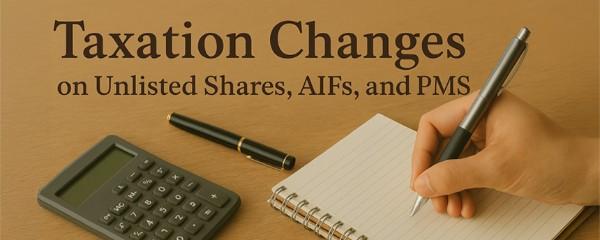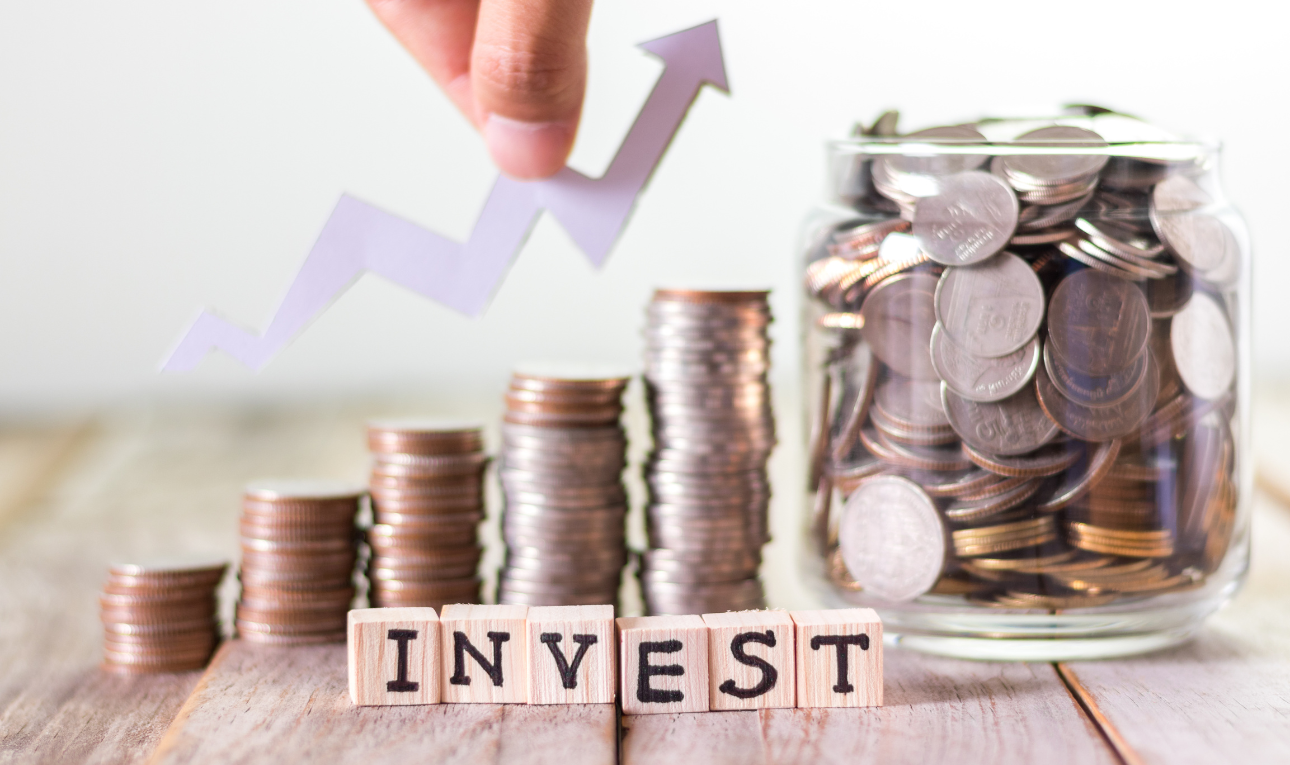Table of Contents
- How Are AIFs Taxed?
- Capital Gains on AIF Category I / II:
- How much Tax do I have to pay on Interest Income in AIF Category I /II?
- How much Tax do I have to pay on Dividend Income in AIF Category I /II?
- AIF Category III
- How Much Tax Do I Have to Pay on Unlisted Equities?
- How Much Tax Do I Have to Pay on PMS (Portfolio Management Services)?
- To Bring it to a close
Taxation Changes on Unlisted Shares, AIFs, and PMS
Wed, 21 May 2025
3 mins

Budget 2025 has brought in a few important changes that directly impact the way your investments in Alternative Investment Funds (AIFs), Portfolio Management Services (PMS), and unlisted shares are taxed.
Whether you're a seasoned investor or just starting to explore these asset classes, here's a simple, no-jargon breakdown of how much tax you might have to pay.
-
How Are AIFs Taxed?
AIFs are pooled investment vehicles and are broadly classified into three categories - each with its own tax rules.
AIF Category I / II:
Category I and II AIFs primarily invest in unlisted securities such as debentures, bonds, or equity of privately held companies. These categories enjoy pass-through taxation, which means:
1) The income is not taxed at the fund level.
2) Instead, tax is levied in the hands of the investors, as if they earned the income directly.
3) Tax withholding is done by the fund:- At 10% for resident investors
- At applicable rates for non-resident investors, depending on relevant tax treaties
-
Capital Gains on AIF Category I / II:
1. Unlisted Shares
Long-Term Capital Gains (LTCG):- Applies if held for more than 24 months
- Taxed at 12.5% (plus applicable surcharge and cess)
Short-Term Capital Gains (STCG):
- Applies if held for 24 months or less
- Taxed as per the investor’s income tax slab
2. Unlisted Debentures & Bonds
- All gains are treated as short-term, regardless of the holding period
- Taxed at the investor’s applicable income tax slab rate
-
How much Tax do I have to pay on Interest Income in AIF Category I /II?
Any interest income generated through investments in Category I or II AIFs is taxed at the investor’s applicable income tax slab rate.
-
How much Tax do I have to pay on Dividend Income in AIF Category I /II?
Dividend income earned by investors through AIF Category I or II is also taxed at the investor’s applicable tax slab rate.
-
AIF Category III
Category III AIFs primarily invest in listed securities, including equities and derivatives. Unlike Category I and II, tax is paid at the fund level, and the income is exempt in the hands of investors. No tax is withheld from investor payouts, as the tax obligation is already met by the fund.
Capital Gains on AIF Category III:
1. Listed Equities
Short-Term Capital Gains (STCG):- Holding period: 12 months or less
- Taxed at 20% (plus applicable surcharge and cess
Long-Term Capital Gains (LTCG):
- Holding period: more than 12 months
- Taxed at 12.5% (plus applicable surcharge and cess)
- Applies only to gains exceeding INR 1.25 lakhs
2. Listed Debentures & Bonds
- STCG taxed at the maximum marginal rate applicable to the fund
- LTCG taxed at 12.5% (plus surcharge and cess)
Derivative Income: Income from derivatives is regarded as business income and is taxable at maximum marginal rate applicable to the fund.
Dividend Income: Taxable at maximum marginal rate applicable to the fund. -
How Much Tax Do I Have to Pay on Unlisted Equities?
The tax you pay on unlisted shares depends on how long you hold them. Here’s a quick breakdown:
1. Long-Term Capital Gains (LTCG)- Applies if you hold the shares for more than 24 months
- Taxed at 12.5% (plus applicable surcharge and cess)
2. Short-Term Capital Gains (STCG)
- Applies if the holding period is 24 months or less
- Taxed as per your individual income tax slab
This distinction becomes especially important if you're investing in private equity or pre-IPO shares — holding your investments longer could lead to better post-tax outcomes.
-
How Much Tax Do I Have to Pay on PMS (Portfolio Management Services)?
Taxation under PMS depends on the type of asset you invest in and how long you hold it. Let’s break it down:
1. Listed Equity (If sold on or after 23rd July 2024)
Short-Term Capital Gains (STCG)
If you sell listed shares within 12 months, the gains are taxed at 20% (plus applicable surcharge and cess).
Long-Term Capital Gains (LTCG)
For shares held more than 12 months, the gains are taxed at 12.5% (without indexation).
Note: This rate applies only on gains exceeding ₹1.25 lakh in a financial year.2. Debentures and Bonds
Interest Income
Any interest earned is taxed as per your individual income tax slab.
Capital Gains- Unlisted Debentures or Bonds: Regardless of how long you hold them, gains are treated as short-term and taxed at your applicable slab rate.
- Listed Debentures or Bonds:
1) STCG (held for less than 12 months): Taxed as per your income tax slab.
2) LTCG (held for more than 12 months): Taxed at 12.5% (plus surcharge and cess)
-
To Bring it to a close
The changes introduced in Budget 2025 have a significant impact on how your investments in AIFs, PMS, and unlisted shares are taxed. Staying informed and adapting your strategy accordingly can help you maximise returns and minimise tax outgo.
Note: The investor may consult their own tax consultant for more clarification.
Start your investment journey with InCred Premier today




